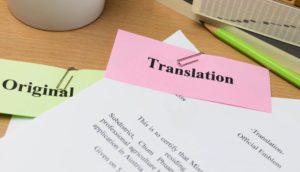 Now amid the digital age, the need for generating enormous volumes of content has exploded. From marketing materials to website localization, blogs, white papers, news & research articles, manuals, and so much more, many organizations and businesses (and consumers) are struggling to keep up with the seemingly insatiable demand for new and engaging content.
Now amid the digital age, the need for generating enormous volumes of content has exploded. From marketing materials to website localization, blogs, white papers, news & research articles, manuals, and so much more, many organizations and businesses (and consumers) are struggling to keep up with the seemingly insatiable demand for new and engaging content.
Moreover, with the increasing pace of globalization, the need for high-quality translated content makes the content management task even more daunting. While emerging technologies such as machine translation (MT) and artificial intelligence (AI) have begun to help tackle the backlog of content translation, most organizations are not yet comfortable with the quality of the translations produced by these new technologies.
The demand for quality translated products requires an effective means of quality control. The current industry standard, known as “TEP” (Translation/Editing/Proofreading), has become the “gold standard” for translation quality control. However, an alternative quality control process from the past still rears its head from time to time: back-translation. However, what is “back translation” and do you need it?
What is “Back Translation”?
Let’s use the example of a simple Spanish to English translation project. As with any translation project, it begins with the translation of a text from a source language (Spanish) into a target language (English).
Using the industry-standard “TEP” process described above, an editor would then compare the source text to the translated text and make any necessary revisions. Revisions could include punctuation, correcting errors in grammar or terminology, improving the style and readability of the text, and checking for any missing or extraneous content. From there, a proofreader checks the translated document again to ensure that there are no additional errors that may have made it past the original translator and editor and that the translated text reads smoothly.
Using a “back translation” model, however, once the original translation has been completed, a second translator will translate the original target language (in this example, English) back into the original source language (Spanish). A reviewer then compares the “new” Spanish translation against the original Spanish source text to see if they largely match.
If the reviewer discovers any discrepancies, it is often unclear if an error originated from the original translation or the back translation. In that case, the reviewer must work with the original translator and the “back translator” to determine the genesis of the error. Or, if it was even an error at all and not just a matter of preference.
Is “Back Translation” a better way to ensure translation accuracy?
While “back translation” may seem like a viable alternative to the “TEP” method of translation quality control, there are several disadvantages to using “back translation,” which is why the practice has largely fallen out of favor in the translation industry, except in the case of a few niche industries, such as with clinical research organizations (CROs).
First of all, back translations are much more time-consuming than the standard “TEP” process since you need to factor the time needed to complete two independent translations, and additional time for the reviewer, original translator, and back translator to evaluate and adjudicate the discrepancies identified by the reviewer. If your translation project is under a tight deadline, back translation may not be feasible.
Not to mention, many clients may not understand that language (and translation) can be subjective. A back translation, therefore, will never match the original source text word-for-word or maintain the same style. For the uninitiated, this could indicate that there are numerous “errors” and sending the translation back to the original translator to “fix.” More often than not, though, there are few, if any, objective “errors,” simply a misunderstanding of how the process works.
Many times, back translation discrepancies can even be traced back to ambiguities in the source text itself, and not the translator or back translator. These misunderstandings, however, waste additional precious time, both for the client and the translation provider.
Back translations also haven’t been shown to improve translation quality significantly. If that were the case, then every translation company would be using it as a matter of standard practice. Not to mention, the leading international translation standards, such as ISO 17100:2015 and the ASTM F2575-14 – Standard Guide for Quality Assurance in Translation, both recommend a version of the “TEP” process in their translation standards.
In conclusion, back translations can often be more trouble than they are worth, increasing turnaround times, translation costs, and with no significant improvement in translation quality. At Affordable Language Services, we are happy to discuss the issue of what is back translation and do you need it for your next translation project. Contact us to learn more!
